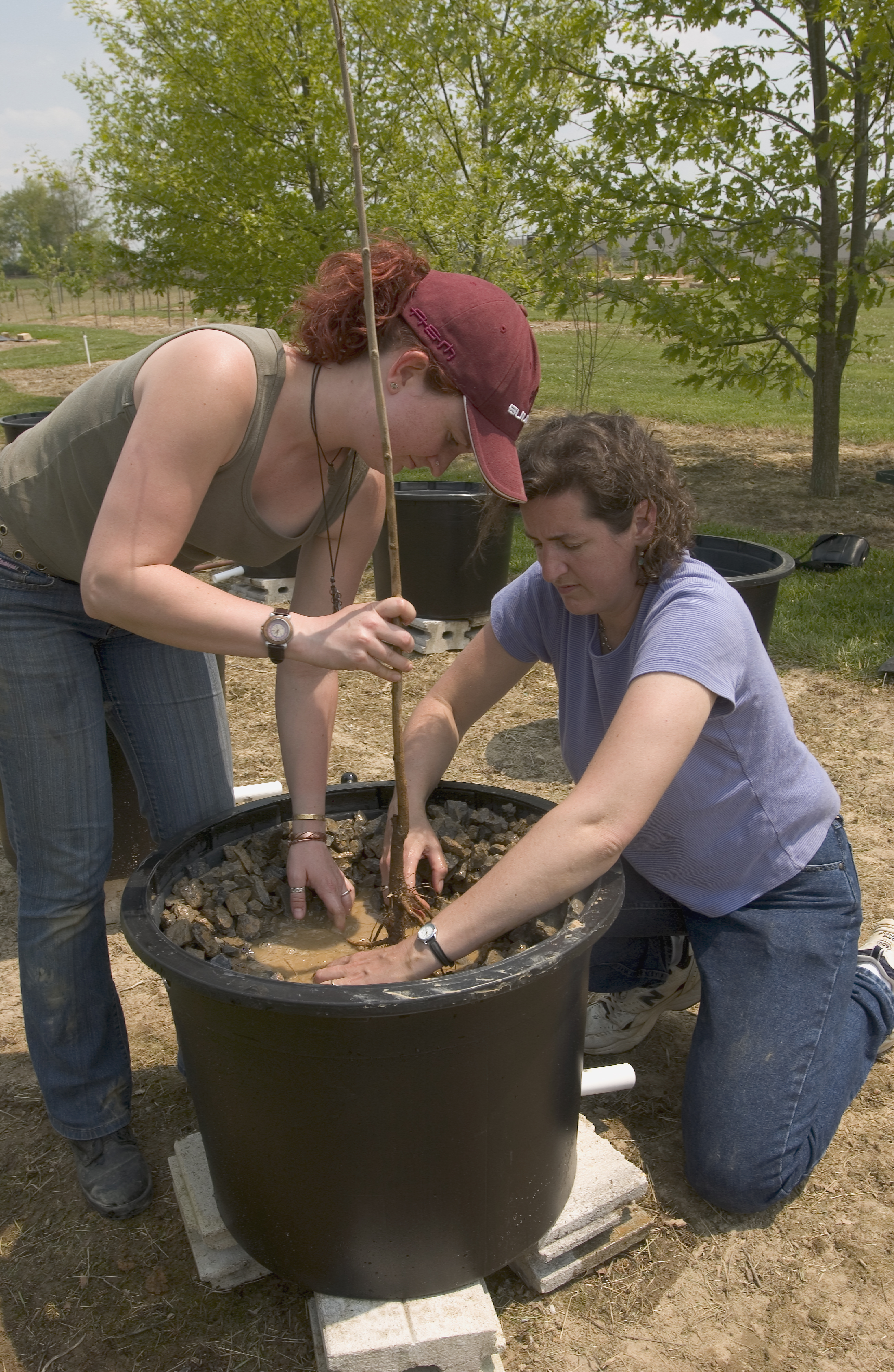Urban forestry professor instrumental in establishment of new national rating program for sustainable landscapes

Susan Day, associate professor of urban forestry in the College of Natural Resources and Environment at Virginia Tech, initiated national discussions in 2007 that culminated this week with the rollout by Green Business Certification Inc. of its new Sustainable Sites Initiative (SITES) rating system, a comprehensive program and toolkit for developing sustainable landscapes.
Day, who holds a joint appointment in the university's College of Agriculture and Life Sciences’ Department of Horticulture, not only helped create the SITES rating system but also served on the Soils Technical Committee that provided the standards for urban soil management.
“Soil standards are a critical component of the rating system,” Day explained. “We carefully deliberated what constitutes sustainable management and design. After working on this project for nearly 10 years, it is rewarding to see it all come together. Our nation’s urban landscapes can only benefit as these guidelines are adopted.”
SITES was developed through a collaborative, interdisciplinary effort of the American Society of Landscape Architects, The Lady Bird Johnson Wildflower Center at The University of Texas at Austin, and the United States Botanic Garden. The rating system can be applied to development projects located on sites with or without buildings — ranging from national parks to corporate campuses, streetscapes and homes, and much more.
“Landscapes knit together the fabric of our communities,” said Rick Fedrizzi, CEO of Green Business Certification Inc. (GBCI). “And sustainable landscapes are critical in their ability to reduce water demand, filter and reduce storm water runoff, provide wildlife habitat, reduce energy consumption, improve air quality, improve human health, and increase outdoor recreation opportunities. SITES is an important addition to our toolkit, and GBCI appreciates this opportunity to support this additional contribution to healthy, thriving communities and neighborhoods.”
“It is exciting to see years of work developing and field testing SITES culminate with the availability of this rating system,” said Fritz Steiner, dean of the School of Architecture at The University of Texas at Austin. “The depth and breadth of approaches that were implemented by pilot projects demonstrates how valuable SITES can become for revolutionizing our relationships with built landscapes.”
“SITES is a powerful tool for enhancing built landscapes precisely because it puts ecosystem services, the benefits humans derive from functional ecosystems, front and center,” said Ari Novy, executive director of the United States Botanic Garden. “This approach will help maximize our collective ability to create sustainable and healthy communities. Making SITES available through GBCI will be a great boon for the quality and resilience of our built landscapes.”
The SITES rating system uses progressive industry standards for landscape design and incorporates additional recommendations from technical experts in the fields of soil science, botany and horticulture, hydrology, materials, and human health and well-being. Some of the credits for sustainable landscape performance have been developed in alignment with similar credits in the U.S. Green Building Council’s LEED (Leadership in Energy and Environmental Design) rating system, the world’s most widely used green building program.
SITES, originally modeled after LEED, includes best practices in landscape architecture, ecological restoration, and related fields as well as knowledge gained through peer-reviewed literature, case-study precedents, and projects registered in the SITES pilot program.
“Adding SITES to GBCI’s rapidly growing list of certification systems and credentials it supports not only expands GBCI’s capabilities, but it also helps us to further our mission to enact global sustainable change,” said Mahesh Ramanujam, president of GBCI.
SITES draws on the experience gained from a two-year pilot program involving more than 100 projects. Forty-six of these pilot projects have achieved certification, including landscape projects at corporate headquarters, national and city parks, academic campuses, and private homes.
Interested project teams can visit sustainablesites.org for more information, to register their projects, and to access the SITES v2 Rating System and Reference Guide, which provides best practices, performance benchmarks, and tools for creating ecologically resilient landscapes and rewards successful projects through certification.
The Wildflower Center and the American Society of Landscape Architects will help GBCI create and implement SITES credentialing and certification offerings such as training project reviewers and will provide educational opportunities for pursuing SITES certification. GBCI owns exclusive rights to the SITES Rating System, its publications, and trademarks.




